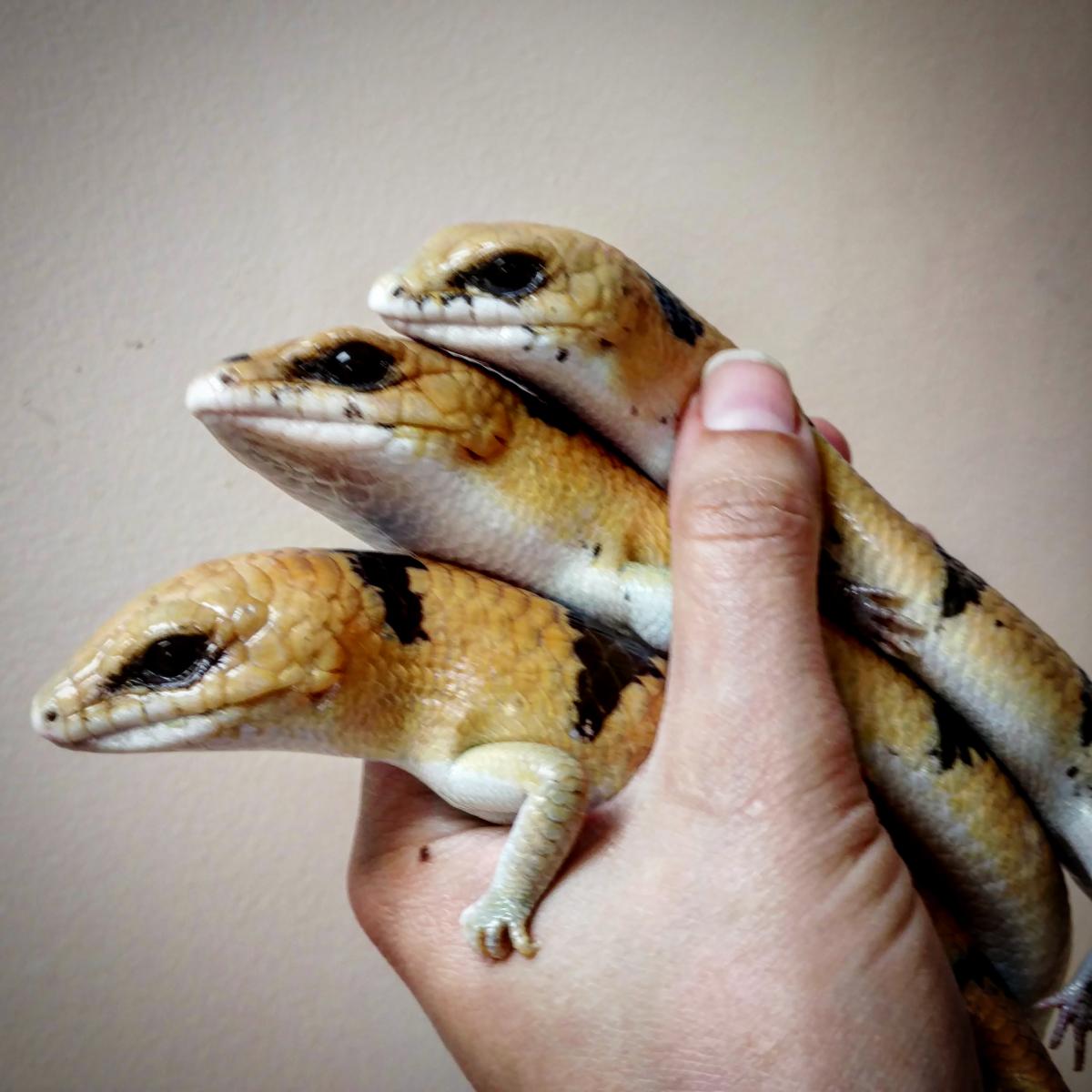Rabbit Hemorrhagic Disease Virus 2
Rabbit Viral Hemorrhagic Disease is caused by a Calicivirus. Though multiple types of this virus have been identified, the serotype that has been seen in the most recent outbreaks here in the United States involves Rabbit Hemorrhagic Disease Virus serotype 2 (RHDV2). RHDV2 is a non-enveloped, single stranded RNA calicivirus that targets the liver and causes destruction of the cells within the liver leading to severe liver damage and dysfunction as well as problems with the animal’s ability to clot his/her blood.




 Peter's banded skinks are uncommon in the reptile hobby. These inquisitive skinks, about the size of a leopard gecko, can make great pets with the right care. They tend to become quite tame and will often beg their owner's for treats. Peter's banded skinks, Scincopus fasciatus, are a monotypic species of the Genus Scincopus which are recognized by their squat bodies, robust limbs, short tails and orange/yellow and black dorsal banding patterns. This species has two described subspecies, S. f. fasciatus and S. f. melanocephalus. The former being described possessing distinct dark transverse blank bands with little to no black on the head while the latter is described as having an almost completely black head and far less distinct black banding. Most captive specimens can be presumed to be of the S. f. fasciatus subspecies based on morphologic appearance. These nocturnal lizards are native to the Sahelian and southern Saharan regions of northern Africa. These sandy regions are extremely arid with limited annual rainfall. Average high temperatures within these regions range from 24 to 42°C (81-108°F) with coolest temperatures dropping as low as 15°C (90°F). Similar environmental conditions should be provided in captivity. Little data is available concerning the natural diet of Scincopus fasciatus. They are believed to be primarily insectivorous, but may consume some plant material. A variety of commercially available insects should be offered along with small amounts of fruits, flowers, and vegetables. The diet should be supplemented with vitamins and minerals. This species UVB lighting requirements are also unknown. Providing this lighting should be strongly encouraged given recent studies have demonstrated benefit in another nocturnal lizard, the leopard gecko (Eublepharis macularius).
Peter's banded skinks are uncommon in the reptile hobby. These inquisitive skinks, about the size of a leopard gecko, can make great pets with the right care. They tend to become quite tame and will often beg their owner's for treats. Peter's banded skinks, Scincopus fasciatus, are a monotypic species of the Genus Scincopus which are recognized by their squat bodies, robust limbs, short tails and orange/yellow and black dorsal banding patterns. This species has two described subspecies, S. f. fasciatus and S. f. melanocephalus. The former being described possessing distinct dark transverse blank bands with little to no black on the head while the latter is described as having an almost completely black head and far less distinct black banding. Most captive specimens can be presumed to be of the S. f. fasciatus subspecies based on morphologic appearance. These nocturnal lizards are native to the Sahelian and southern Saharan regions of northern Africa. These sandy regions are extremely arid with limited annual rainfall. Average high temperatures within these regions range from 24 to 42°C (81-108°F) with coolest temperatures dropping as low as 15°C (90°F). Similar environmental conditions should be provided in captivity. Little data is available concerning the natural diet of Scincopus fasciatus. They are believed to be primarily insectivorous, but may consume some plant material. A variety of commercially available insects should be offered along with small amounts of fruits, flowers, and vegetables. The diet should be supplemented with vitamins and minerals. This species UVB lighting requirements are also unknown. Providing this lighting should be strongly encouraged given recent studies have demonstrated benefit in another nocturnal lizard, the leopard gecko (Eublepharis macularius).